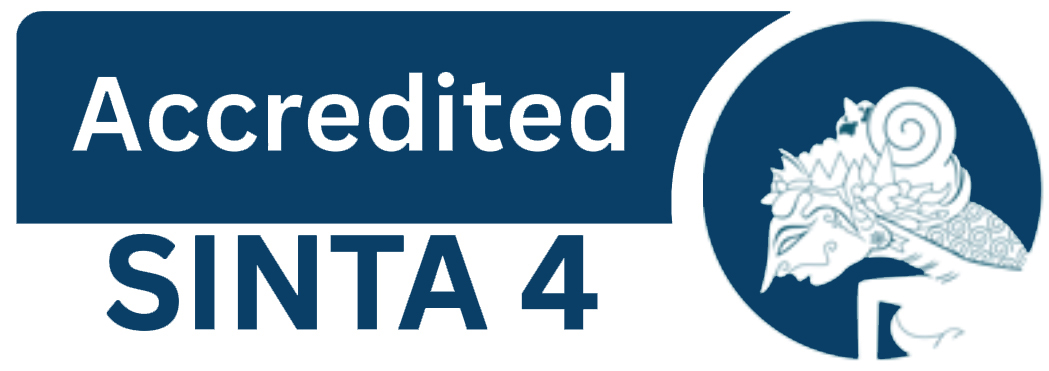INTERNALISASI ATURAN POLYA TERHADAP KECAKAPAN SISWA MENYELESAIKAN MASALAH KPK & FPB
DOI:
https://doi.org/10.22460/collase.v3i6.6380Keywords:
Matematika Dasar, Polya, Pemecahan MasalahAbstract
Penelitian ini bertujuan untuk mendeskripsikan apakah ada pengaruh model pembelajaran Polya terhadap kemampuan penyelesaian soal KPK dan FPB pada siswa kelas V SDN 1 Labuapi Kabupaten Lombok Barat. Subjek dalam penelitian ini adalah 25 siswa kelas VA SDN I Labuapi dan 25 siswa kelas VB SDN I Labuapi. Teknik pengumpulan data berupa tes tertulis dan instrumen berupa soal uraian yang berjumlah 10 butir. Teknik analisis data yang digunakan adalah uji t atau uji t. Berdasarkan hasil analisis data dapat disimpulkan bahwa: (1) Kemampuan menyelesaikan soal KPK dan FPB sebelum diterapkan model pembelajaran Polya pada siswa kelas V SDN 1 Labuapi Kabupaten Lombok Barat dengan ketuntasan klasikal mencapai <75%. Hal tersebut dibuktikan dengan ketuntasan klasikal sebesar 60,4%. (2) Kemampuan menyelesaikan soal KPK dan FPB setelah diterapkan model pembelajaran Polya pada siswa kelas V SDN 1 Labuapi Kabupaten Lombok Barat dengan ketuntasan klasikal mencapai ≥75%. Hal tersebut dibuktikan dengan ketuntasan klasikal sebesar 98,2%. (3) Ada pengaruh model pembelajaran Polya terhadap kemampuan pemecahan soal KPK dan FPB siswa kelas V SDN 1 Labuapi Kabupaten Lombok Barat. Hal tersebut dibuktikan dengan nilai sig. (2tailed) sebesar 0,000 <0,05 dan nilai t-hitung ≥ t-tabel atau 5,508> 1,708 berarti Ho ditolak dan Ha diterima.
References
Bikić, N., MariÄić, S. M., & Pikula, M. (2016). The effects of differentiation of content in problem-solving in learning geometry in secondary school. Eurasia Journal of Mathematics, Science and Technology Education, 5(2), 15–23. https://doi.org/10.12973/eurasia.2016.02304a
Brocato, T. A., Coker, E. N., Durfee, P. N., Lin, Y.-S., Townson, J., Wyckoff, E. F., Cristini, V., Brinker, C. J., & Wang, Z. (2018). Understanding the Connection between Nanoparticle Uptake and Cancer Treatment Efficacy using Mathematical Modeling. Scientific Reports, 8(1), 75–89. https://doi.org/10.1038/s41598-018-25878-8
Creswell, J. W. (2014). Research Design: Qualitative, Quantitative and Mixed Methods Approaches (4th ed.). SAGE.
Filipenko, M., & Naslund, J. A. (2015). Problem-based learning in teacher education. In Problem-Based Learning in Teacher Education. Macmillan Publishing Co., Inc. https://doi.org/10.1007/978-3-319-02003-7
Hoque, E. (2017). Memorization: A Proven Method of Learning. International Journal of Applied Research, 22(1), 142–150.
Kosko, K. W., & Gao, Y. (2017). Mathematical Communication in State Standards Before the Common Core. Educational Policy, 31(3), 275–302. https://doi.org/10.1177/0895904815595723
Maulyda, A. M., Hidayati, V. R., Erfan, M., Umar, & Sutisna, D. (2020). Kesalahan Komunikasi Matematis (Tertulis) Siswa Ketika Memahami Soal Cerita. Jurnal Karya Pendidikan Matematika, 7(1), 1–7.
Maulyda, M. A., Sukoriyanto, S., Hidayati, V. R., Erfan, M., & Umar, U. (2020). Student Representation in Solving Story Problems Using Polya Steps. Formatif: Jurnal Ilmiah Pendidikan MIPA, 10(1), 25–34. https://doi.org/10.30998/formatif.v10i1.4629
Revina, S., Zulkardi, Z., Darmawijoyo, D., & Galen, F. Van. (2011). Spatial Visualization Tasks To Support Students’ Spatial Structuring In Learning Volume Measurement. Journal on Mathematics Education, 2(2). https://doi.org/10.22342/jme.2.2.745.127-146
Rushton, S. J. (2018). Teaching and learning mathematics through error analysis. Fields Mathematics Education Journal, 3(1), 14–26. https://doi.org/10.1186/s40928-018-0009-y
Sugiyono. (2016). Metode penelitian kuantitatif kualitatif dan R&D. Alfa Beta.
Sukoriyanto, S., Nusantara, T., Subanji, S., & Chandra, T. D. (2016). Students’ Errors in Solving the Permutation and Combination Problems Based on Problem Solving Steps of Polya. International Education Studies, 9(2), 11. https://doi.org/10.5539/ies.v9n2p11
Visser, R., & Flynn, A. B. (2018). What are students’ learning and experiences in an online learning tool designed for cognitive and metacognitive skill development? Collected Essays on Learning and Teaching, 11(4), 350–367. https://doi.org/10.22329/celt.v11i0.5039
Yang, Z., & Tian, J.-F. (2019). Asymptotic expansions for the gamma function in terms of hyperbolic functions. Journal of Mathematical Analysis and Applications, 478(1), 133–155. https://doi.org/10.1016/j.jmaa.2019.05.022
Yusnia, D. (2018). Analysis The Ability of Students Problem-Solving on Counting Operations of Algebra Form. MUST: Journal of Mathematics Education, Science and Technology, 3(1), 1. https://doi.org/10.30651/must.v3i1.1017



